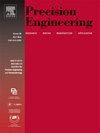Automated visual roughness evaluation of ground surface based on vertical incidence of circular structured light
IF 3.5
2区 工程技术
Q2 ENGINEERING, MANUFACTURING
Precision Engineering-Journal of the International Societies for Precision Engineering and Nanotechnology
Pub Date : 2025-01-10
DOI:10.1016/j.precisioneng.2025.01.010
引用次数: 0
Abstract
In response to the significant influence of workpiece texture placement direction on the accuracy and reliability of visual roughness evaluation, a high-precision approach for measuring surface roughness using vertical incidence of circular structured light is proposed. Initially, the theory of vertical incidence method of circular structured light is described. Subsequently, the feasibility of the proposed imaging approach and its robustness against texture interference are validated using TRACEPRO simulations. The superiority of the proposed approach is confirmed by comparative analysis with oblique incidence method. An experimental setup is then designed based on the simulation model to capture images of samples with varying roughness and texture orientations. A model correlating structured light area features with roughness confirms the method's effectiveness and resistance to texture interference. Experimental results demonstrate that the proposed method effectively mitigates texture effects, achieving an average roughness prediction error of 0.02 μm.
求助全文
约1分钟内获得全文
求助全文
来源期刊
CiteScore
7.40
自引率
5.60%
发文量
177
审稿时长
46 days
期刊介绍:
Precision Engineering - Journal of the International Societies for Precision Engineering and Nanotechnology is devoted to the multidisciplinary study and practice of high accuracy engineering, metrology, and manufacturing. The journal takes an integrated approach to all subjects related to research, design, manufacture, performance validation, and application of high precision machines, instruments, and components, including fundamental and applied research and development in manufacturing processes, fabrication technology, and advanced measurement science. The scope includes precision-engineered systems and supporting metrology over the full range of length scales, from atom-based nanotechnology and advanced lithographic technology to large-scale systems, including optical and radio telescopes and macrometrology.

 求助内容:
求助内容: 应助结果提醒方式:
应助结果提醒方式:


